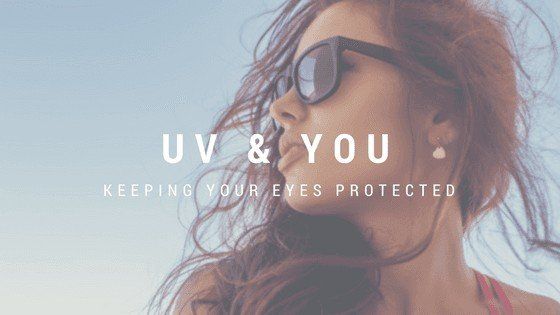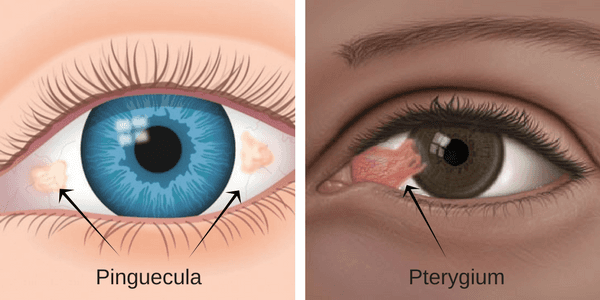Can My Eyes Get Sunburned?
May is healthy vision month - and as we draw nearer to the official first day of Summer, what better time to discuss one of the most commonly overlooked parts of eye health - UV protection. Most of you are probably fully aware of the negative effects UV rays can have on your skin, but did you know the sun can be just as damaging to your eyes?
Here are just a few of the ways your eyes can be affected:
- UV Keratitis or Corneal Sunburn - Yes, you read that right, you can actually get a sunburn on your eyes! Excessive exposure to UV from the sun, tanning beds, welder’s flame, and certain halogen lamps can literally burn your cornea (the front clear surface of the eye) causing extremely painful symptoms that will need to be treated by your eye care physician.
- Macular Degeneration - There have been studies connecting too much sunlight to an increased potential for developing
Macular Degeneration - a disease that affects your macula and ultimately causes a decrease or complete loss of central vision.
- Cataracts - A cataract occurs when the eye's internal lens begins to cloud and yellow causing blurred vision and an increased sensitivity to glare. Cataracts are most commonly a natural result of aging and will start to form in everyone's eyes at some point after the age 55. However, long term sun exposure can speed up the formation of
cataracts causing a need for surgery several years sooner than normal.
- Pinguecula - A pinguecula is a deposit of fat, protein, or calcium that appears as a yellowish spot or bump on the conjunctiva (the clear covering over the white part of the eye). These growths are most commonly caused by dryness and an exposure to wind, dust, and UV rays.
- Pterygium - Also caused by wind, dust, and UV rays - a pterygium is a fleshy growth of tissue that sometimes starts as a pinguecula and can grow large enough to cover part of the cornea obstructing vision.
- Snow Blindness - You aren’t only at risk for damage from UV rays in the summer. A form of UV keratitis or photokeratitis - snow blindness - occurs as a result of the light rays being reflected off of the bright white surface of the snow. This is fairly common in snowboarders and skiers. Much like a regular sunburn, the effects aren’t noticed until sometime after exposure making the symptoms particularly alarming since you might not make the connection between the two.
- Skin Cancer - The skin on our eyelids and surrounding eye area is extremely thin and sensitive. These areas can be affected by cancers including basal cell carcinoma, squamous cell carcinoma, and melanoma. Basal cell carcinoma makes up for about 90 percent of the cases of eyelid cancer which is of note because this type of cancer has a significant risk of spreading to the eye itself and causing blindness and disfigurement of the face.
What can you do about it?
- First and foremost, make sure you wear sunglasses that specifically provide 100% UV protection to ensure that both UV-A and UV-B rays are blocked. This should be done even in the winter months. And don’t let those cloudy days fool you, the sun’s rays can still pass through.
- Try to choose a wraparound style to keep the sun from entering from the sides of your sunglasses.
- Always wear sunscreen when you will be doing anything outdoors that puts you in direct or indirect sunlight. You should choose one that is at least 15 SPF or higher, and a nickel sized dollop should be used on the face alone according to the
Skin Cancer Foundation .
- Do you use a tanning bed? According to the
American Academy of Ophthalmology, studies have shown that tanning beds can expose you to UV levels of up to 100 times what you would normally get from the sun. If you insist on going this route for your bronze glow, at least be sure to wear eye protection.
- This might seem like a no-brainer, but you’d be surprised... Never look directly at the sun - including during a solar eclipse. This can lead to a condition known as solar retinopathy where the rays from the sun are concentrated onto your retina by your eye’s internal lens causing an burn. Think of this like the magnifying glass on the ant trick except the inside of your eye is the poor ant! This can cause permanent damage to your vision and even blindness.
- Don’t forget about kiddos and older family members - everyone is at risk!
Stay tuned for our special Women's Week post coming this month!





